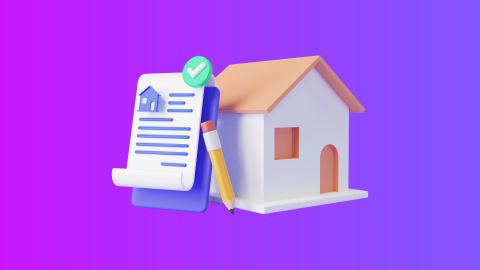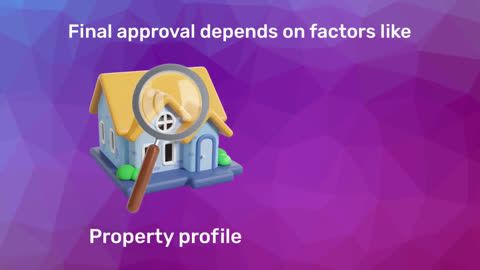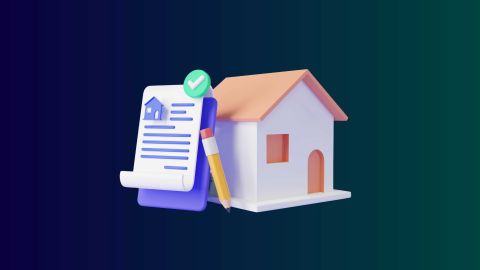When you are repaying a home loan, understanding the tax benefits available can significantly reduce your financial burden. One such benefit is the deduction on housing loan principal repayment under Section 80C of the Income Tax Act. This provision allows homeowners to claim up to Rs. 1.5 lakh annually on the principal portion of their loan EMIs. It is a great way to lower your taxable income while investing in property, making homeownership more affordable in the long run. By knowing the eligibility criteria and limits, you can maximise your tax savings efficiently.
What is Section 80C in housing loan principal repayment?
Section 80C of the Income Tax Act is a crucial provision for taxpayers seeking to save on taxes through various investments and expenses, including the repayment of home loan principal. Specifically, it allows individuals to claim deductions on the principal amount repaid towards their home loan, up to a limit of Rs. 1.5 lakh per financial year. This tax benefit can significantly reduce your taxable income and make homeownership more affordable over time.
For taxpayers repaying a housing loan principal, this deduction is only available if the loan has been taken for the purchase or construction of a residential property. Importantly, the deduction is applicable only after the construction is completed, and the ownership of the property is in your name. Both self-occupied and let-out properties qualify for this benefit, making it a valuable option for a wide range of homeowners. By claiming housing loan principal deductions under Section 80C, you can efficiently lower your tax burden while building equity in your property.
If you are planning to purchase or construct a residential property to take advantage of these tax benefits, securing the right home loan is crucial for maximising your savings. Check your eligibility for a home loan from Bajaj Finserv to explore competitive interest rates starting from 7.45%* p.a and flexible repayment options. You may already be eligible, find out by entering your mobile number and OTP.
Eligibility criteria for claiming Section 80C on housing loan principal
Here’s a list of the eligibility criteria for claiming deductions under Section 80C on the housing loan principle:
- Ownership of property: To claim the home loan principal deduction under Section 80C, you must be the owner or co-owner of the property for which the loan was taken.
- Loan purpose: The housing loan must be for the purchase or construction of a residential property. Loans taken for renovation or repairs are not eligible for this deduction.
- Completion of construction: The property’s construction must be completed, and the property must be in your possession before claiming the housing loan principal 80C deduction.
- Repayment of principal: Only the principal portion of the home loan EMIs is eligible for deduction under Section 80C. The interest component qualifies for separate deductions under other sections like Section 24(b).
- Self-occupied or let-out property: You can claim this deduction for both self-occupied and let-out properties, provided you are making the principal repayment.
Limits of deduction on home loan principal under Section 80C
The maximum deduction you can claim for housing loan principal repayment under Section 80C is Rs. 1.5 lakh per financial year. This limit is shared with other eligible investments and expenses such as life insurance premiums, PPF contributions, and more. Therefore, it’s essential to consider your total investments under Section 80C before calculating how much of the home loan principal repayment qualifies for a deduction.
If you are a co-borrower on the loan and co-owner of the property, each borrower can claim up to Rs. 1.5 lakh separately, provided they are contributing towards the loan repayment. This makes it especially beneficial for joint home loans, as it allows for higher collective tax savings. However, if you sell the property within five years of possession, any deductions claimed under Section 80C on the housing loan principal will be reversed, and you will have to pay tax on the previously claimed amount.
Understanding these limits can help you plan your home purchase better and choose a loan structure that maximises your tax benefits. Check your eligibility for a home loan from Bajaj Finserv to get loan amounts up to Rs. 15 Crore* with tenure options up to 32 years, helping you optimise your principal repayments for maximum tax savings. You may already be eligible, find out by entering your mobile number and OTP.
How to maximize deductions under Section 80C?
Here’s how you can maximise your deductions under 80C:
- Combine investments: In addition to housing loan principal 80C deductions, maximise your tax savings by combining other eligible investments, like PPF, ELSS, or life insurance premiums.
- Joint loans: If you are a co-borrower, both parties can claim deductions separately, allowing for combined savings of up to Rs. 3 lakh, assuming both meet the eligibility requirements.
- Start early: Begin loan repayments early in the financial year to ensure you maximise the deduction limit.
- Utilise the Rs. 1.5 lakh limit: Ensure that your total deductions under Section 80C, including housing loan principal repayment, reach the Rs. 1.5 lakh cap to make the most of the tax benefits.
- Plan for additional sections: Use other sections like Section 80CCD(1B) to claim deductions for additional contributions towards schemes like NPS.
Additional deductions under Section 24(b) for interest payments
Section 24(b) of the Income Tax Act provides an additional tax benefit by allowing deductions on the interest portion of home loan repayments. Under this section, you can claim a deduction of up to Rs. 2 lakh per year if the property is self-occupied. For let-out properties, the entire interest paid during the year is eligible for deduction, although the overall loss from house property that can be claimed is capped at Rs. 2 lakh.
The key difference between Section 80C and Section 24(b) is that Section 80C applies to the principal repayment, while Section 24(b) is for the interest component. Both deductions can be claimed simultaneously, allowing homeowners to benefit from significant tax savings. However, the interest deduction under Section 24(b) is only applicable if the construction of the property is completed within five years from the end of the financial year in which the loan was taken.
Deductions for first-time buyers under Section 80EEA
First-time home buyers can benefit from an additional deduction under Section 80EEA, which offers up to Rs. 1.5 lakh on home loan interest payments. To qualify, the loan must be sanctioned between 1st April 2019 and 31st March 2022, and the property’s stamp duty value should not exceed Rs. 45 lakh. This deduction is in addition to the Rs. 2 lakh interest deduction under Section 24(b), making it a valuable tax-saving tool for first-time buyers. However, if you claim a deduction under Section 80EEA, you cannot claim it under Section 80EE for the same year.
Benefits of jointly owned property for tax savings
Joint ownership of property can lead to considerable tax savings. If a property is jointly owned and the loan is taken by multiple borrowers, each co-owner can claim tax deductions individually. Under Section 80C, each co-owner can claim a deduction of up to Rs. 1.5 lakh on the principal repayment. Similarly, under Section 24(b), both co-owners can claim up to Rs. 2 lakh each on the interest component. This can significantly increase the total tax savings for a family or partners, making joint ownership a financially beneficial option.
Additionally, having multiple co-borrowers increases the loan eligibility amount, as the lender considers the combined income of all borrowers. However, joint ownership must be clearly defined in the property agreement to ensure that tax benefits are distributed proportionately based on each person’s share.
Where you cannot claim a deduction under Section 80C?
Here’s where you cannot claim decisions under Section 80C:
| Scenario | Reason |
| Under-construction property | Section 80C deductions cannot be claimed until the property construction is completed and ownership is obtained. |
| Loan for repairs or renovation | Loans taken for repairs, reconstruction, or renovation of a property do not qualify for income tax deductions under Section 80C. |
| Selling within five years | If the property is sold within five years of possession, deductions claimed on the principal under Section 80C will be reversed. |
| Non-residential property loans | Loans taken for non-residential properties like commercial real estate are not eligible for deduction under Section 80C. |
Other topics you might find interesting |
|||
Explore Bajaj Finserv Home Loan
If you are considering a home loan or looking for a lender that offers flexible repayment options, Bajaj Housing Finance Home Loan could be your answer. With competitive interest rates and options like part-prepayment, balance transfer, and top-up loans, Bajaj Housing Finance ensures that you can manage your principal value effectively, keeping your financial commitments within control.
Here are the benefits of choosing Bajaj Housing Finance Home Loan
1. Attractive interest rates: Enjoy competitive home loan interest rates, making home ownership more affordable.
2. Long repayment tenure: You can choose a repayment tenure that suits your financial situation, ensuring that managing your home loan is hassle-free.
3. Quick disbursal: Experience a swift and hassle-free loan application and disbursal process, helping you move into your dream home faster.
4. Minimal documentation: Our streamlined documentation process makes applying for a home loan easy and convenient.
Bajaj Housing Finance makes financing your dream home simpler. Apply today and enjoy a hassle-free home loan experience designed to meet your needs.You may already be eligible, check your offers by entering your mobile number and OTP.




